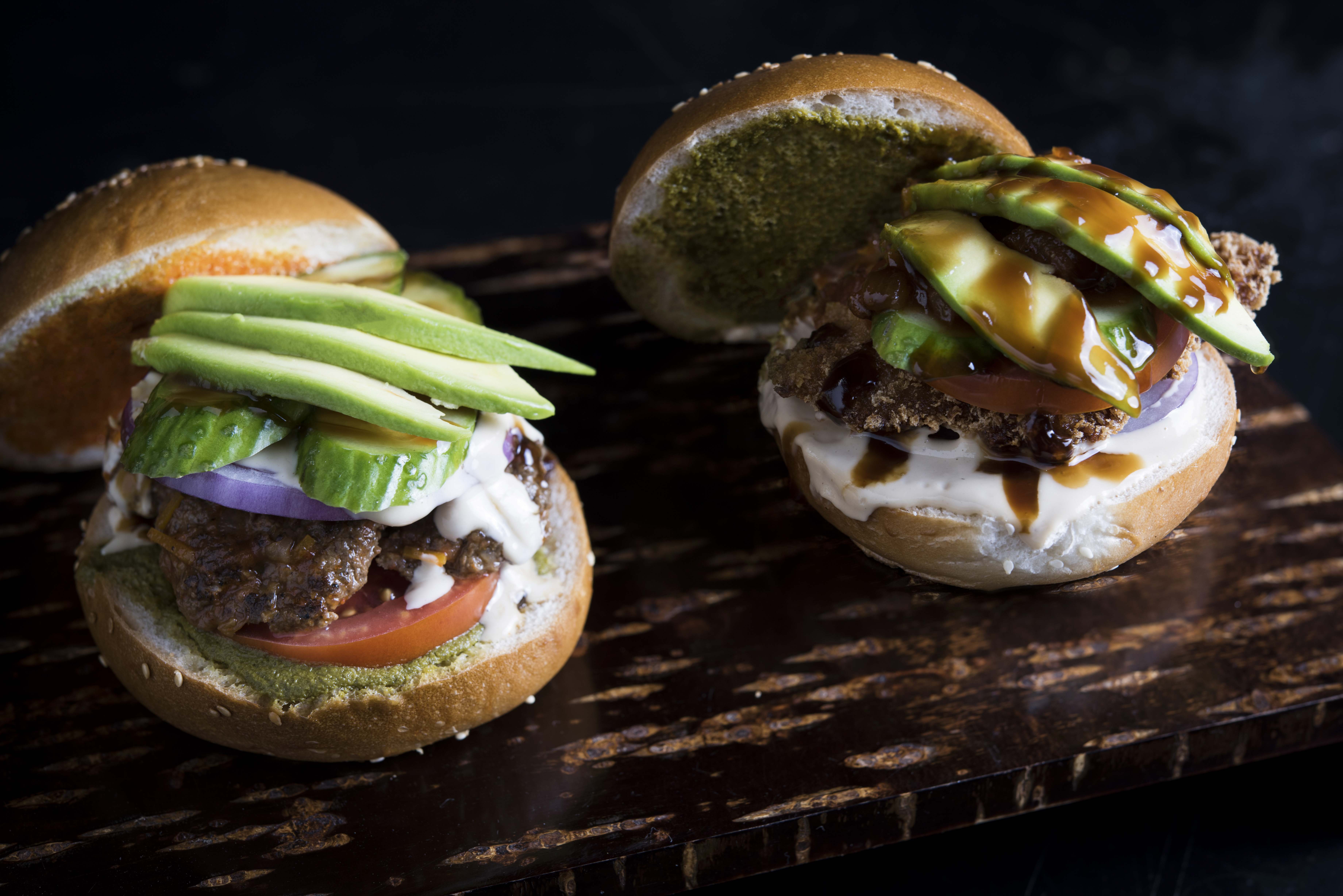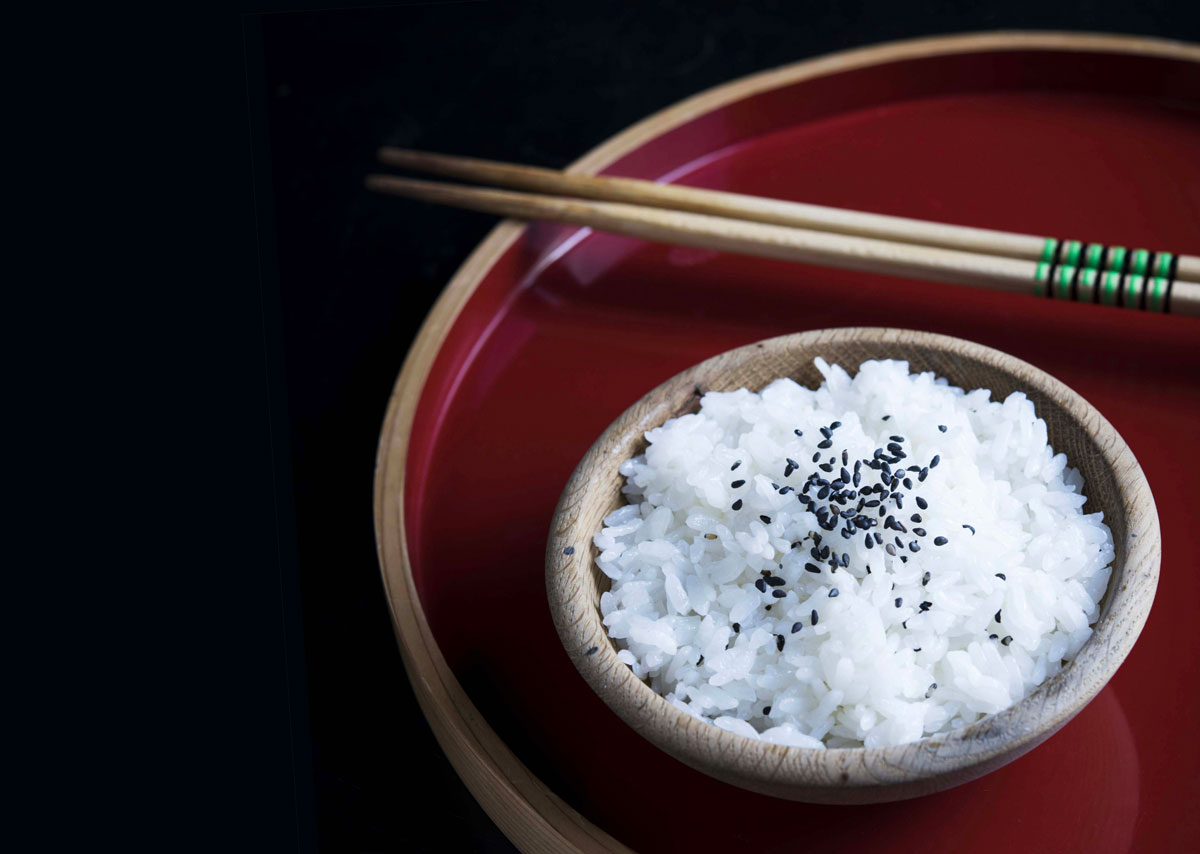The New Gastronome
Indian-Japanese Fusion
A Talk with Sassan Tomoaki
by Daria Ratiner
by Daria Ratiner

In the global world that we live in, where every metropolitan city is offering endless food opportunities, the question of authenticity has to be raised. Of course, there are amazing Japanese restaurants in Tel-Aviv, but can we honestly say that they are serving an authentic Japanese cuisine?
Maybe in our pursuit of authenticity, we forgot something elementary– Japanese food with Israeli ingredients would never be authentic Japanese –as the water, the soil and the climate here are completely different. And maybe, just maybe, it’s an excellent thing, as this new cuisine can be good, even amazing, and perhaps this cultural fusion is precisely what we should be looking for.
 Veggie Burgers with tofu, potatoes, and lentils patties.
Veggie Burgers with tofu, potatoes, and lentils patties.
The person that introduced me to this beautiful world of fusion cuisine was Sassan Tomoaki. Originally from Japan, Sassan was born in Tokyo and spent his early years living both there and in Hokkaido, the second largest island in Japan, also known as, the kingdom of food. Being closer to Russia, the climate in this area of Japan is much colder. And with the combination of the mountains and the shore, this island offers its visitors the freshest seafood, dairy products, and exciting vegetables. But for the last four years, Sassan was more a citizen of the world, traveling around, meeting people and cultures and all the time cooking. Europe, America, Australia, each left a memorable mark on Sassan’s cooking because, for him, the kitchen is a way to share a culture.
 Meet Sassan Tomoaki and his Sushi Konus.
Meet Sassan Tomoaki and his Sushi Konus.
Sassan’s journey in the kitchen starts with the Izakaya cuisine in Japan, working in different restaurants, and at the fish market. Since he was always looking for adventures, he even found himself working in a Japanese-Italian restaurant. While he was traveling in Canada, he became acquainted with Indian cuisine and fell in love with its spices and aromas. Picking Cherries in Australia, of-course Sassan was the cook of the camp; he had his first catering experience. But even more exciting than that, he met his girlfriend Maya, and together, they decided to come to Israel and cook here, driven by the idea that food brings people together and makes them happy.
 Rice, the beauty of simplicity.
Rice, the beauty of simplicity.
“Being a Japanese chef, he felt an obligation to make Japanese food, but within this category, he is choosing this fusion.”
Nowadays, Sassan and Maya are making food at the Bascula, an Urban Circus in Tel-Aviv and a stage for different events and performances. Their idea here is to make Japanese-Indian Vegan Fusion, and they’re also bringing it to a lot of fairs and markets. This Japanese-Indian Fusion started when Sassan met Raji, a very talented chef, originally from India, at one of those markets, and together, they established – Sasa-Raji.
 Sasa-Raji, the powerful duo of the Indian-Japanese Fusion, and their Glass Noodle Salad.
Sasa-Raji, the powerful duo of the Indian-Japanese Fusion, and their Glass Noodle Salad.
This cultural mix perfectly fits Sassan’s Ideology about food. He understands the need for people to put labels on food, putting everything in proper categories, but he also tries to break this pattern and make something new, outside these boundaries. Being a Japanese chef, he felt an obligation to make Japanese food, but within this category, he is choosing this fusion. By working with local ingredients, and instead of limiting himself to the attempt of making authentic food, his feeling will never taste as good as it will back in Japan; he is playing in the playground of fresh, local ingredients and making the best out of them, without being limited by the tradition.
Of course, you can find lots of Japanese imported products, but excellent Sake, really good rice and a good Soya sauce are not easy to find outside of Japan. The thing he misses the most is a plant called Shiso, a cross between sesame and basil, that he used to chop and add to different foods for flavor, using the leaves as a herb.
When I asked Sassan what he loves to cook most, I expected to hear the name of an exotic Japanese dish and was surprised when Sassan showed his appreciation of the Italian kitchen. At home, he loves to cook Italian and will always be up for good pasta. “Italian food is all about the simplicity and having good ingredients,” Sassan says.
 Sassan and his Gyoza served at the Bascula with mushrooms and tofu or sweet potatoes and parsley.
Sassan and his Gyoza served at the Bascula with mushrooms and tofu or sweet potatoes and parsley.
“Every cuisine Sassan met during his travels left an impression on his way of cooking.”
You can’t talk about favorite foods without talking about Soul Food, those sweet memories that only food can evoke. Sassan’s favorite food is a dish his grandmother used to make and reminds him of home. It is an Onigiri with Umeboshi – a rice bowl made out of white rice, formed into a triangular or cylindrical shape, and wrapped with seaweed, Nori, on the outside. Don’t be confused! It’s not a type of Sushi; just an ancient way to eat and preserve rice. It can have different fillings; one of the most traditional ones is the pickled plum, a pickled Ume, also called Umeboshi, tasting like an apricot, sour and salty. It can also be filled with salted salmon, kombu, or any other salty ingredient that will fulfill the part of a natural preservative.
 On the Menu, from left to right – Indian salad, tofu patty sandwich, and vegetable curry.
On the Menu, from left to right – Indian salad, tofu patty sandwich, and vegetable curry.
At the beginning of humankind, the ancient human tribes lived as hunters and gatherers, moving around all the time in an endless search for food and better living conditions. About 10,000 years ago, with the agricultural revolution, the humans, —which was very much unlike their nature— started to settle down. Some of us still have that passion for moving around and searching, in our DNA.
 Tempura Vegetables mix at the Bascula.
Tempura Vegetables mix at the Bascula.
Every stop on our road is teaching us something new; the greatness is to see that and to learn from it. Every cuisine Sassan met during his travels left an impression on his way of cooking. One of those experiences happened far away in the mountains of Peru. The tribal people in the mountains have a tradition of making a special tea called Emoliente. It is a mixture of different liquids, herbs, and spices. It’s considered to be a very healthy drink that helps hangovers and digestive problems. Served both hot and cold, in the morning and at night, Emoliente is usually made out of a herb mix that contains roasted barley, dried horsetail, flax seed, plantain leaf, alfalfa sprouts, and other medicinal herbs. The bottles on the cart are different liquids made from the natural plants of the Andes mountains. Nowadays, it’s served all around Peru by vendors on street corners, and of course, each of them have their secret recipe for the drink. Different therapeutic qualities are related to it such as improving digestion, reducing cholesterol in the bloodstream, having lots of essential vitamins, and relieving cold symptoms. In fact, It was first introduced to Peru in the colonial era as a medicine. It became so popular that every year, on February 20th, the locals have celebrated the national day of Emoliente and other traditional drinks.
Sassan’s Gyoza recipe
To leave you all with a good taste, Sassan shared with us the recipe for his amazing Gyoza.

Let’s make some Gyoza!
For a Dim Sum: steam for 7-10 minutes on hot temperature steam.
For a Gyoza: fry for 5 minutes in total; first on a lightly oiled pan for one minute, then add water to the pan to have steam around and fry for 4 more minutes.
Congrats! You have made yourself a Gyoza (or a Dim Sum, as it is the same thing). Anyhow you make it, enjoy!
Sassan’s sweet Halva buns with matcha and coconut sorbet.

Halva Baozi with Matcha Sorbet.
For the Dough:
For the Feeling:
For the Sorbet:
For serving:
Walnuts / Coconut flakes / fruits / a syrup of your choice.
Let’s make it:
Serve with matcha Sorbet, and decorate with walnuts / coconut flakes / fruits / a syrup of your choice or just as is.
Article can also be found here! | Photo credits ©Daria Ratiner